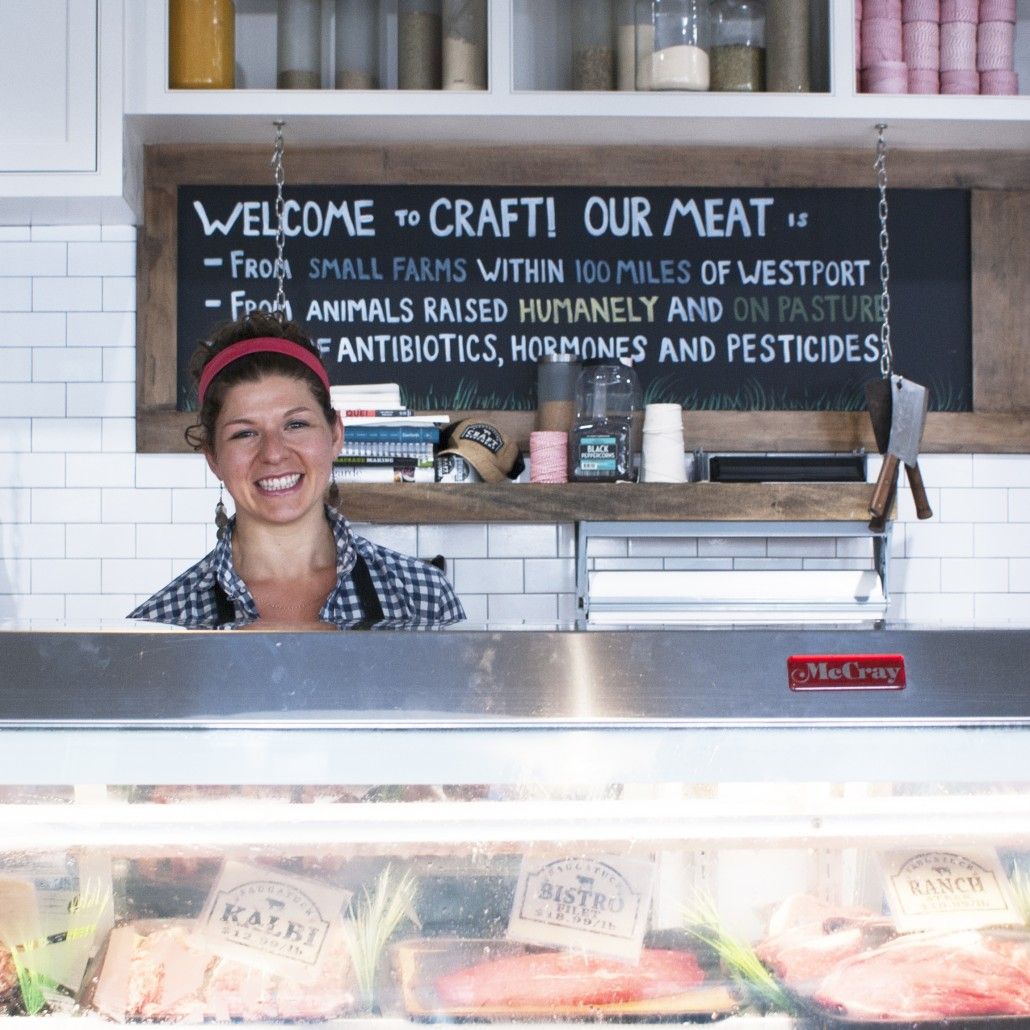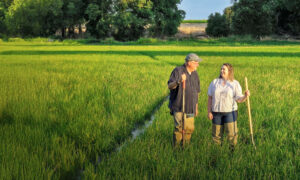One of the primary critiques of the regenerative ag movement is that it can’t scale to satisfy the current global demand for food, especially when it comes to producing pasture-based protein.
Regenerative food business consultant Samantha Garwin is no stranger to the mental gymnastics that come with pontificating about what a regenerative food system would look like. Through her regenerative food business consulting service, she helps food companies achieve sustainable growth and guides them towards different practices. Her client roster to date includes high profile names like Applegate, Cooks Venture, Hudson Valley Harvest, and ocean farming startup Greenwave.
She’s also a writer, sharing her thoughts on the role of livestock production in our food system. Her recent article on Medium, Eating Animals Isn’t the Problem, is the culmination of her personal journey as a meat eater in search of something better. She first came to the concept of pursuing better meat instead of eliminating conventional meat through what she describes as her own personal crisis around eating meat that started in 2008.
“Back then, it was incredibly difficult to find meat that was not produced in the industrial system. I initially decided I won’t eat any meat at all,” Garwin told AFN. “It’s hard to say what triggered the next phase, but I realized that billions of people eat meat around the world and we must have had ways of raising meat in the past that are better than the system we’ve arrived at now. Wouldn’t it be much more practical to be part of the solution as opposed to abstaining completely?”
The term regenerative ag has only entered her lexicon in recent years, but like many others, she’s been hot on better meat’s trail for several years. Although the term regenerative strikes her more as marketing lingo, she sees its potential to help consumers understand the idea of producing meat differently. Before she was a consultant, Garwin was a whole animal butcher and CEO of Fleishers Craft Butchery. She started with the company working the counter and rose to the top in part due to her enterprise software experience.
Through the experience, she connected to a larger movement that is advocating for better meat production and observed how the shop’s clientele was eager for educational information about meat production and sourcing.
After leaving Fleishers, Garwin began having discussions with industry folks to see who needed help and where problems were fierce. As a Cornell graduate, Garwin has a degree in information science and spent nearly four years working with a software company before her stint as a butcher. The culmination of her software background, butchery experience, and personal passion for proving that better meat is the answer, coalesced into her new mission to help food businesses scale regeneratively.
Scaling better meat through replication
Turning back to the oft-asked question of whether better meat at impactful scale is doable, Garwin says: “I think oftentimes we overcomplicate things because simple is not easy. Going towards a regenerative system is very simple, but it’s not easy and I’m not sure anyone will get rich off of it. Money tends to go towards things that are scalable and we often focus on scale because it helps people make money, not because it’s necessary for something to work well.”
As an example, she points to Will Harris’ White Oak Pastures, which has spearheaded some of the effort to demonstrate that diversified, regenerative livestock production at a robust scale is doable. But instead of suggesting that his operation continues to expand, Harris suggests that it be replicated elsewhere to support food system development in other communities.
Last year, White Oak Pastures released the results of a Life Cycle Assessment study evaluating the carbon output of the operation, which runs 10 species of livestock in a pasture-based rotational grazing system. The LCA analyzed the greenhouse gas footprint of the farm, which included enteric emissions (belches and gas) from cattle, manure emissions, farm activities, slaughter and transport, and carbon sequestration through soil and plant matter. General Mills, which buys meat from the farm and has been actively exploring regenerative food systems, paid for the LCA.
The research concluded that White Oak Pastures sequesters more carbon than its cows emit during their lifetimes. The operation offsets at least 100% of its grass-fed beef carbon emissions and as much as 85% of the farm’s total carbon emissions.
“It can be replicated. We could have another White Oak Pastures raising five species with GAP step five in Northeast Texas. Make another one. But it doesn’t get much bigger because it would break,” Garwin says. “People had the same negative comments about the scalability of solar energy 15 years ago. It’s too expensive and you will never power the world with it. Through a lot of effort and investment, it’s now everywhere and much cheaper. When something starts, its expensive and you cannot see a way forward. That’s just the nature of something new.”
Although she sees the benefits of technology, she is leery of the assumption that innovation is always the answer. When approaching problems, many people automatically discount native indigenous ways of production, she says. As she writes in her article on Medium, people seem less eager to invest their money and time into things that have proven their efficacy simply because it is not a piece of hardware or software.
That being said, in the mission to scale regenerative food systems a few new tools may prove invaluable.
“Through my consulting experience, I see the thing holding food companies back from growing is sometimes not having the right software. It’s usually a simple fix, however, not something on the level that Silicon Valley thinks about. It’s better inventory management software or logistics software that is standard in other industries. The fact that there are companies who make it to several million in sales that are still using Excel is outrageous.”
In her ideal world, the food industry would use many of the information management systems that are germane in other industries. If regenerative agriculture is going to scale, it needs to “level up” on every aspect of operation and many of these aspects have nothing to do with food production, she says.
Other challenges that lie ahead for companies interested in regenerative food systems include fighting consumers’ label fatigue and paying attention to the entire supply chain, not just the farm-level and consumer-level.
“A lot of attention gets paid to farmers but the number of processors is just as important as well as truckload distribution services. I know so many businesses shipping via FedEx like Happy Valley Meat because they’re the only one who will do less than a whole truckload of shipments. The American economy has disadvantaged small business owners at every level including food producers who have even more stringent requirements around shelf life, temperature, and more. The question I often think about is how do we create an economy and distributed network to support small business owners?”




